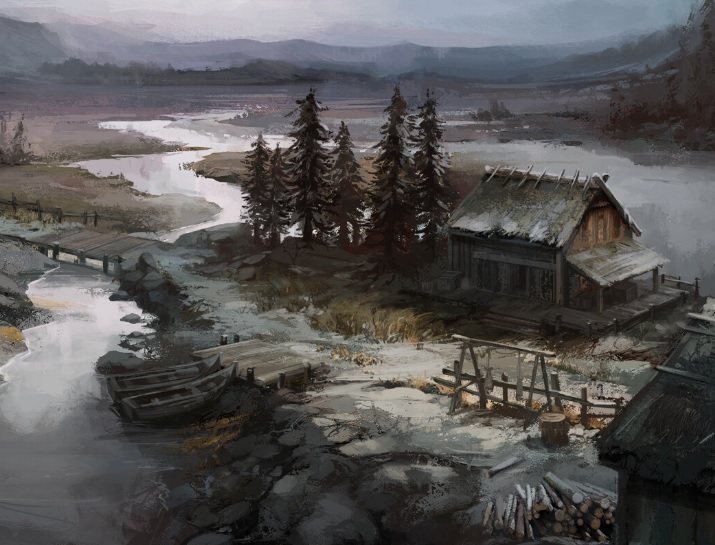Land Clearance
Land Clearance describes the labour-intensive practice of preparing hinterland for cultivation, typically carried out by homesteaders aiming to establish farms. Using the limited tools available in the medieval-Renaissance period, this task requires an extraordinary amount of effort. Fully clearing a piece of land can take a decade or more, as survival demands cultivating small portions of land as soon as possible. This means land is cleared incrementally, season by season, while the soil, initially poor, is repeatedly turned and worked until it becomes fertile and sustainable.
The most effective way to carry out land clearance is as part of a larger community. Groups of homesteaders, monastical orders, or migrating clans often pool their efforts, sharing the labour involved in cutting, digging, ploughing, and heavy lifting. With many hands, tasks such as felling trees, removing stumps, clearing large stones, building walls, and constructing shared facilities like a garner are prioritised and completed more efficiently. In contrast, a single family struggles to manage the workload alone. They might tolerate brush or a troublesome stump for years, waiting until they have enough time and resources—or until children mature enough to contribute to the labour.
These developing farmlands occur in type-7 hexes as works in progress. In the early years, they produce only a modest yield, just enough to sustain the population while allowing for a small surplus to pay taxes and purchase essential materials for continued development. Over time, as the land becomes more productive and the population increases, the surplus keeps pace with the community's growth. Eventually, the area transforms into a "type-6" hex, reflecting improved productivity and the emergence of a larger, more stable community.
Appearance
Such farms typically seek out the best available soil within a hinterland, resulting in homesteads that are often some distance apart from their neighbours. In a steppeland, a homestead is visible from afar, usually nestled in a bottomland where the soil is richer. In forested or scrubland regions, the approach to a farm is along a path that, though rough and partly overgrown, shows signs of having been tidied and maintained. The first indication of a farmstead is usually a fence, built to contain livestock that may not always be visible. For swine, in particular, fences are often erected around partially cleared areas of forest. Water for the farm is more commonly sourced from a brook or stream than from a well.
The farmhouse consists of a hovel flanked by a shed and a feeding stall, with a simple wood canopy to shelter hay. The farmyard often contains obstacles such as a dead tree, a stump, a boulder, or a rocky outcropping, which remain until the residents have the time or tools to remove them. Animals like chickens roam freely, returning to the farmyard to forage for food. A mongrel dog is a typical feature, barking at strangers but rarely aggressive enough to attack.
The residents of such homesteads are generally more friendly than suspicious, as they have little worth stealing and are eager for news or opportunities from the outside world. Their knowledge of the surrounding landscape rarely extends beyond three or four miles. Food is scarce outside the harvest months of July to October, but they are otherwise willing to trade produce for coin or, even better, tools, cloth, pottery, or other practical items. The farm’s population typically consists of d6+1 residents. Space inside the hovel is limited, as animals are often allowed to sleep indoors. The number of guests who can be accommodated is calculated as 5 minus the number of residents. Strangers who stay are often invited to camp in the yard, but any stay longer than 12 hours comes with an expectation of contributing labour to the homestead.
See also,
Bread (symbol)
The Adventure
